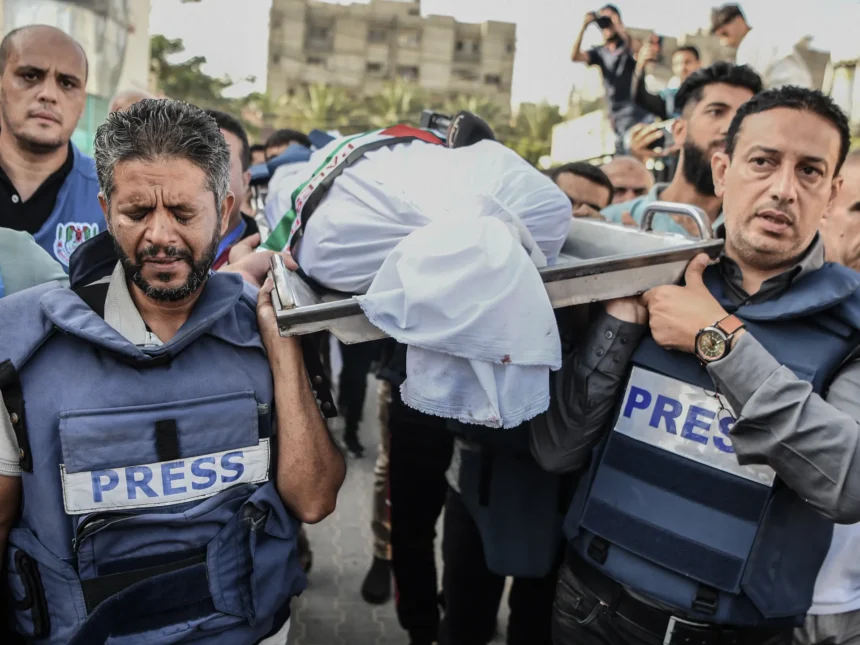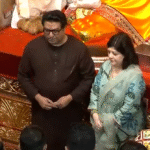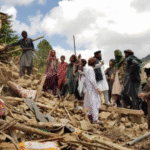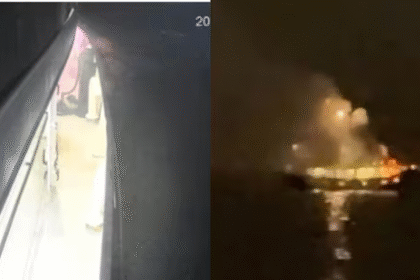When the Media Cheerleads a Live-Streamed Genocide: A Devastating Dilution of Journalism
On August 10, 2025, after news broke of Israel killing prominent Al Jazeera journalist Anas al-Sharif and his four colleagues in a targeted attack on a tent just outside the Al-Shifa hospital in Gaza, the New York Times’s report on the murder was headlined as follows:
Israeli Strike Kills Al Jazeera Journalists, Network Says
Anas al-Sharif, a well-known correspondent, was among those killed. Israel said it had targeted Mr al-Sharif, claiming he worked for Hamas, which he had denied.
That’s vintage NYT.
At the top line, the report seemingly disclaims all knowledge of the killing except via what the ‘network says’. (For all the reader knew, it was just what Al Jazeera claimed.) In the tag-line, the newspaper juxtaposes two dramatically opposed perspectives: Israel claiming al-Sharif ‘worked for Hamas’, and the dead man having denied it. When did al-Sharif’s denial come? Just as Israel snuffed the life out of him? Three days prior, or three weeks, or three months?
The US’s most widely read English-language newspaper, long considered a proud bastion of liberal democracy, offered no independent perspective on the targeted killing beyond repeating the killers’ claims and the victim’s denial. From its blasé tone, the report could well have been about the death of a stray cat rather than that of a journalist.
Forget questioning the killers’ actions altogether. What if al-Sharif had, hypothetically, only pretended to be a journalist? The New York Times, bound by its notion of “evenhandedness,” maintained a detached stance—even though those killed in the Israeli attack were visibly reporting from Gaza’s rubble around the clock, engaged in the same profession as the NYT itself.
And not only that. The report goes on to add that, in October 2024, Israel had accused al-Sharif and five other of Al Jazeera’s reporters of ‘being fighters for Hamas and Palestinian Jihad’. Also that
At the time, the Israel military distributed what it said were documents seized from Gaza that showed membership lists, phone directories and salary slips for members of the Qassam Brigades and the Al-Quds Brigades, the armed wings of the two groups. The lists included names matching those reporters’.
Here the mask finally slips off the NYT’s studied ‘neutrality’. Quite deliberately, the newspaper omits to add if it had reviewed those ‘documents’ for their reliability or coherence, a standard journalistic practice no journalism school anywhere forgets to din into its students. On the contrary, that chilling sentence about the militants’ names matching the journalists’ is a sure give-away that the newspaper wanted its readers to think there might be credible evidence of those killed having been not quite what they masqueraded as.
But the NYT went one better that day. Right next to the news of the journalists’ killing, it posted a report on Al Jazeera, the journalists’ employer, with the following headline:
Al Jazeera, five of whose reporters the broadcaster said were killed by an Israeli attack, has angered governments across the region that claim it gives voice to terrorists. The outlet denies that.
That, verily, is the coup de grace delivered with a journalistic knife. And that knife is twisted cheerfully, energetically:
Experts who track the network says its coverage and commentary echo many of Hamas’s claims and increases support for its actions, especially on its Arabic-language channel.
Of course al-Sharif was an ‘Arabic-language’ reporter, so the NYT’s readers are invited to draw their own conclusions. A more masterful manipulation of the reader’s mind is difficult to find even in the NYT’s storied archives.
This insidiousness has been typical of NYT’s journalism over the past 23 months of the carnage in Gaza. Early on after October 7, 2023, as Pankaj Mishra has reminded us in his profoundly important book The World After Gaza, the newspaper’s editors had expressly advised their staff against using such terms as ‘occupied territory’, ‘refugee camp’ and – god forbid! – ‘ethnic cleansing’.
The idea was to zealously ring-fence the Israeli state against all criticism of its calculated brutality and permit only highly sanitised representations of Gaza’s landscape of misery and devastation. When the newspaper is obliged to report on the death toll in Gaza, it deploys a fascinating artifice. After mentioning the number of dead, it invariably adds the caveat that it’s a number put out by the “Hamas-controlled Gaza Ministry of Health” who do not distinguish between civilian and combatant deaths.
What’s being insinuated here is simple: that the numbers can hardly be trusted, and that even granting they were accurate, they could very well include many killed militants as well. Does the NYT ever tell its readers that Hamas controls the ministry because Hamas happens to be the last legally elected government in Gaza? Or that the Hamas estimate is the only possible count in the circumstances, because Israel stubbornly bars foreign journalists, aid organisations and multilateral agencies from entering Gaza?
No, the paper never goes into all that unnecessary detail. But every time the Gaza death toll is mentioned, the NYT also mentions the number of Israeli civilians killed and taken hostage by Hamas on October 7, 2023. This “balancing” act is performed with remarkable precision in every report on Gaza.
When, for example, well-known Holocaust historian Omer Bartov writes an opinion column pronouncing Israel guilty of genocide in Gaza, the NYT promptly commissioned another article from Bret Stephens which is headlined ‘No. Israel is not Committing Genocide in Gaza.’
But as important a place the NYT occupies among news media around the world, it can hardly claim the honour of being unique in reporting on Gaza.
The day Anas al-Sharif was killed by Israel, Bild, Germany’s biggest newspaper, splashed al-Sharif’s photo under this headline: ‘Terrorist Disguised as Journalist Killed in Gaza‘. After push-back from some readers, that headline was modified to ‘Journalist Killed Was Allegedly a Terrorist’. And only a week before that, Bild had published another report targeting Palestinian photographer Anas Zayed Fteiha; the headline ran: ‘This Gaza Photographer Stages Hamas Propaganda‘.
The newspaper accused Fteiha of fabricating images of starving Palestinian children as part of a Hamas misinformation campaign. Indeed in that article, Fteiha’s title as journalist appeared in quotation marks, implying that Bild did not consider him a real journalist. And soon enough, Israel’s foreign ministry amplified the Bild story, citing it as proof that Hamas was manipulating global opinion on Israel through operatives camouflaged as newsmen.
But Bild was capable of bigger things: last year it had helped Benjamin Netanyahu torpedo ceasefire talks by ‘leaking’ to Israel ‘excerpts’ from what it called – falsely, as it turned out – a Hamas approach paper to the negotiations that purportedly revealed Hamas’s unwillingness to end the war. Bild was hardly an outlier in Germany’s journalism space, however.
Around the same time that the Bild story on Fteiha appeared, the Deutscher Journalisten-Verband (DJV), one of Germany’s largest journalists’ associations, issued a statement warning against “manipulation” in press photography. It cast doubt on images of emaciated Gaza children, claiming their condition was “not attributable to a famine.” When some readers challenged this stance, the DJV pointed to a Frankfurt daily that speculated the children shown were not starving but instead suffering from “preexisting conditions such as cystic fibrosis.”
Even the self-identified left-wing German press engaged in this game of smoke and mirrors. In January 2025, Die Tageszeitung ran a provocatively titled article, “Can Journalists be Terrorists?”. Yet it did not feature the voice of a single journalist from Gaza, while prominently highlighting comments from the Israeli military. The innuendo behind such framing was impossible to miss.
While the likes of the NYT and Bild have made misrepresentation and prevarication their trusted tools while reporting and commentating on the Gaza genocide, the BBC’s favourite fall-back has been self-censorship. In recent months, the broadcaster even refused to air two documentaries it had commissioned on Gaza.
Gaza: How to Survive a Warzone was pulled from iPlayer after the BBC claimed it had discovered that one of the film’s narrators, a 13-year-old Palestinian boy, was the son of a Hamas official, a claim that the makers of the documentary denied having any knowledge about. And the broadcaster didn’t address the obvious question: did the film show real people living (and dying) under real circumstances; and if it did, how did a narrator’s supposed identity take away from that reality?
But, even more tellingly, the BBC dropped another documentary it had commissioned – Gaza: Doctors Under Attack – on the specious argument that the film might create “a perception of partiality” (presumably to the Palestinians). This, despite the fact that the medics and the crew who participated in the film’s making had quite clearly risked their lives while shooting the documentary under relentless Israeli fire. The BBC’s defence of its decision to pull the plug on the film is breathtaking in its arrogant sanctimoniousness:
“…We have come to the conclusion that broadcasting this material risked creating a perception of partiality that would not meet the high standards that the public rightly expect of the BBC.”
The blowback from current and former staffers was swift. Gary Lineker, legendary footballer and former presenter of the BBC’s very popular Match of the Day programme, minced no words. “I think the BBC should hold its head in shame,” he said.
More than two hundred current employees co-signed (with over 400 media personalities, actors and prominent public intellectuals) a stinging letter criticising the “political decision” to drop the film. The BBC, they said, was “an organisation crippled by the fear of being perceived as critical of the Israeli government”. A former BBC journalist, who had left in exasperation over the broadcaster’s craven abdication of journalistic responsibility over Gaza, wrote in the Guardian: “Editorial caution had become editorial cowardice”.
As far as the BBC was concerned, she wrote, “(i)mpartiality…Is about PR, optics and managing the anger of certain groups rather than following the evidence and championing robust journalism…”. In its comprehensive report on the BBC’s coverage of Israel’s war on Gaza, the UK’s Centre for Media Monitoring recognised “a systematic pattern: the minimisation of Palestinian suffering and perspectives and the amplification of Israeli narratives, victimisation and emotive stories”. An analysis of 35,000 pieces of BBC content, the CMM report noted, “shows Israeli deaths given 33 times more coverage, per fatality, and significantly more emotive language”.
Aside from these sneaky subterfuges that mainstream Western news outlets have woven into their journalistic code, there are also frequent examples of outright advocacy for the murderous Netanyahu regime. On August 17, 2025, CNN interviewed Ian Williams, president of the Foreign Press Association in Washington DC, about the killing of Anas al-Sharif and his colleagues just a week earlier. Williams made his view crystal clear: these killings were nothing short of daylight thuggery.
The CNN anchor, however, appeared aghast. “But didn’t Israel call these men Hamas operatives and show ‘some documents’ as proof?” she pressed. Williams dismissed the claim, insisting he couldn’t care less if the reporters were associated with Hamas, since Israel had no right whatsoever to target them. He added that he knew better than to take Israel at its word. Still unconvinced, the anchor pushed again: “But many people would think that after Israel’s ‘disclosures’, these men were fair game for the Israeli military.” Her persistence left Williams visibly shocked.
Admitted that this anchor was a particularly hateful specimen of an exceptionally poisonous genus of modern-day Western ‘liberal’ scribes and thankfully not every mainstream journalist is as bigoted and obtuse as her. But, in a very real sense, maybe even more harm is being done by journalists and news anchors who have been peddling their obnoxious pro-Israel narratives somewhat more subtly, artfully, so that readers are induced not to dismiss out of hand their reporting as completely unreliable.
Consider this Reuters report, on the killing of one of Reuters’s own photojournalists, headlined:
Issam Abdallah, a Reuters videographer, was killed while working in southern Lebanon.
Does this cleverly-crafted headline let the reader know that Abdallah was killed by Israeli forces? Of course it doesn’t, and that was the whole idea behind creating such a headline. “20 (or 30 or 40) die in Gaza” is a common enough editorial tool harnessed by Western media to take the sting out of any report on Israeli killing of civilians. Such instances are legion.
It’s sad to contemplate the depths of depravity to which mainstream Western news media have sunk with their eyes wide open. In large measure, of course, this degeneracy mirrors the moral atrophy of the West’s political classes, but in some ways the media appear even more debased than the rulers, prompting many conscientious newsmen across Europe and the US to quit jobs held for many years. Here’s how Anne Boyer, poetry editor at the NYT, visualised her own resignation from the newspaper:
“Because self-expression is the status quo, sometimes the most effective protest by artists is refusal.
“I cannot write poetry amidst the ‘reasonable’ tones of those trying to normalize this unreasonable suffering. No more ghoulish euphemisms. No more verbally sanitised hellscapes, No more warmongering lies.
“If this resignation leaves a hole in the news the size of poetry, then that is the true shape of the present.”
Has Boyer’s resignation left a hole in the news the NYT serves up daily? One can never be very sure.
Also Read: Israel Levels Gaza City into ‘Fields of Rubble,’ Killing 78 Across the Enclave








